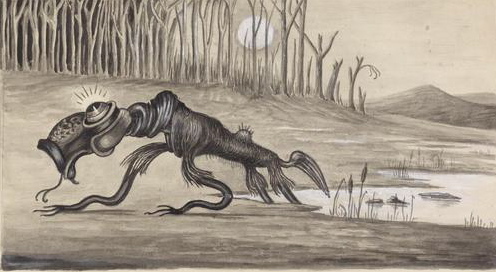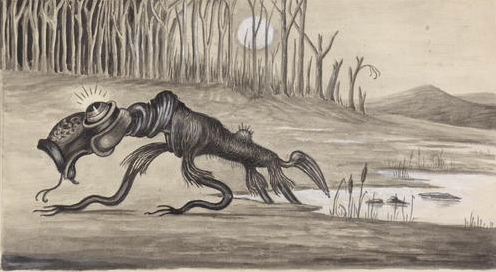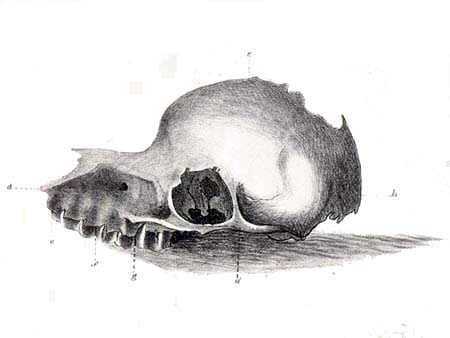The Bunyip gobbles up children and livestock if they inch too close to the edge of the water.
It mainly preys upon women and children in the darkness of the night.
It mainly preys upon women and children in the darkness of the night.

Wikimedia
[*] The Bunyip is an aquatic mammal.
[*] The Bunyip is a mythical creature from Australian Aboriginal mythology.
It lurks in swamps, billabongs, creeks, riverbeds, and waterholes.

[*] Aborigines have differing opinions on the Bunyip.
[*] The Bunyip is believed to have supernatural powers.
The creature was eleven paces long and four paces in width.

Wikimedia
[*] Witnesses have trouble describing the appearance of The Bunyip.
The most popular description is that it looks like an enormous starfish.
However, some people claim it looks like a snake with a beard.

Wikimedia
Other witnesses claim it has one large eye on its head and a mouth on its stomach.
[*] Some say the Bunyip has the characteristics of a bird and an alligator.
They believe it has a long bill with serrated edges like a stingray.

Wikimedia
When it stands, it reaches twelve or thirteen feet.
[*] Over the years, fossils have been uncovered that could be associated with the Bunyip.
[*] In January of 1846 a skull was found in the Murrumbidgee River near Balranald.
[*] The first written description of the Bunyip came in 1845.
[*] In 1933, Charles Fenner suggested that the Bunyip was actually a seal.
[*] The wordBunyipcomes from the Wergaia language of Aboriginal people of South-Eastern Australia.
It translates to devil or evil spirit.
In the 1850s, the word was also used as a synonym for imposter or pretender.
In 1853, it was used to describe Australians aspiring to be aristocrats.
In the 1990s, it was used to describe members of the conservative Liberal Party of Australia opposition.
The Bunyip has also been calledkianpratyandwowee.